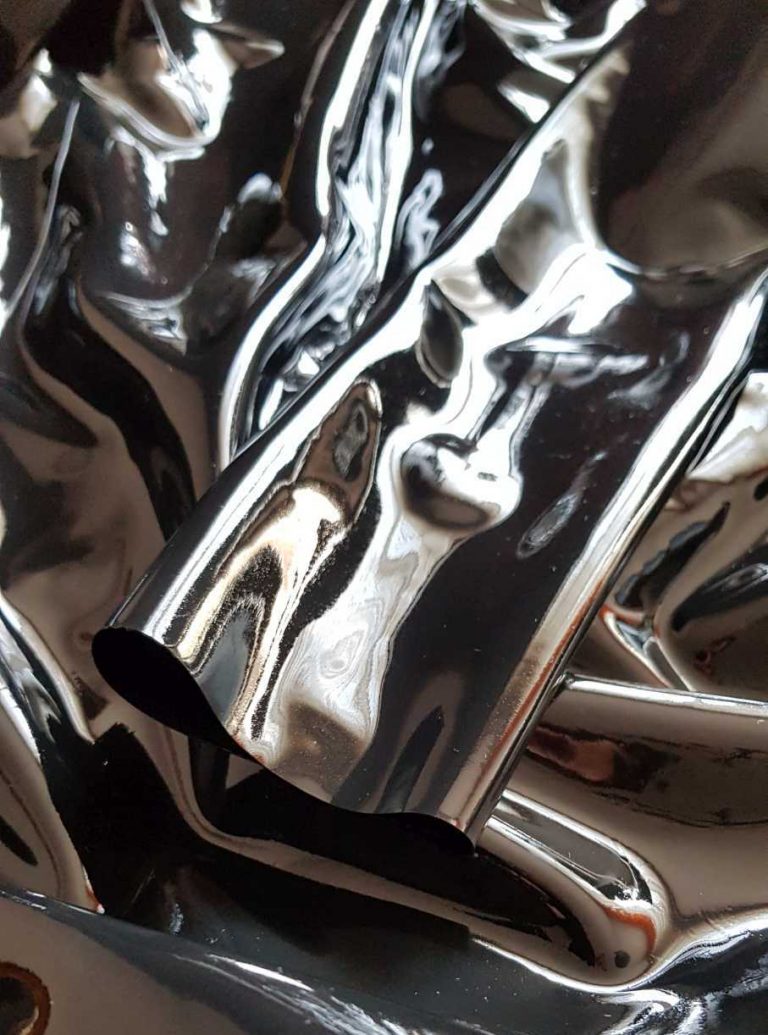About latex
LATEX
What is latex and what is its origin?

The simplest answer to the question “what is latex?” might be “latex is rubber”. There are countless uses for latex in the world – from medical to sports, fashion and much, much more. Here we want to address latex as a material used in broadly defined fashion. Therefore, it is necessary to clarify at the beginning that various materials that are shiny and body-hugging are mistakenly labelled as latex. Such terms often appear as a name for lack, vinyl, pvc and others. Meanwhile, latex is a completely different material, with different properties and wearing comfort.
In the common understanding, the statement “latex is rubber” is true, but it is worth taking a closer look at the topic, because it is extremely interesting. The first surprising fact may be that latex is a natural material. Admittedly, there is also a synthetic version based on petroleum-based polymers, but the vast majority of rubber used to make clothes is natural. In conventional fashion we have a very similar situation – natural materials (wool, cotton) and synthetic ones (acrylic, polyester). It really is worth paying attention to the labels! In the world of latex, unfortunately, we are unlikely to have ingredient labels. At most we can find the information “100% latex”. Things get better, however, because we do not have a flood of different rubber products in chain stores, and thus do not try to cut costs at all costs. But is synthetic latex bad and what is the difference?
First of all, natural rubber has many desirable characteristics. Its synthetic version is just an attempt to imitate them. The first noticeable difference is the smell. Natural latex has a sweet scent, often comparable to the smell of vanilla. The synthetic version is a petrochemical product, so there is a distinctive chemical smell that can linger for a very long time. Of course, you have to be careful, because manufacturers certainly try to cover up the artificial smell by adding more fragrant chemicals. The second different aspect is the weight. Natural latex can weigh a lot. You can feel the difference by comparing, for example, latex pillows or mattresses. The natural material is also more durable and flexible, and these are important aspects of latex clothing. If well cared for, it can last for many years. The downside of natural latex is its imperfection – sometimes various air bubbles or marks can appear, for example. Unfortunately, nature can be imperfect, but that’s the whole charm and power of nature.
So let’s take a look at the process of creating natural latex, because the matter is really fascinating. But before we do that, let’s answer the question what is the difference between latex and rubber. These words are often used as substitutes, having in fact the same material in mind. And that’s fine in colloquial speech! But technically, latex is the raw material for natural rubber, and let’s use that terminology for a moment. The raw material for rubber is latex extracted from plants, or more specifically, from special trees.


Latex is usually a white liquid that resembles milk. It is an emulsion composed of many compounds such as proteins, alkaloids, starch and many others. It is found in about 10% of flowering plants, but is extracted from one particular species – Hevea brasiliensis. This tree is commonly called “rubber tree”. Latex flows in the tree in specially designed vessels, located just under the bark. These vessels spiral around the trunk of the tree. Interestingly, latex has a defensive function in plants against herbivorous insects. The properties of this tree sap are a deterrent to their enemies many times more than spikes, thorns, etc. Harvesting latex is done by pulling a thin layer of bark across the latex vessels. This is done with special knives. A semi-spiral panel on the tree trunk is exposed. This breaks the vessels and the latex sap flows over several hours from the top of the trunk into vessels located at the bottom of the incisions made. This process is called “latex/rubber tapping”. It is done at night or in the morning when the temperature is not too high. It is worth noting that these trees are not cut down to harvest the latex, and the process itself does not cause the tree to die.
The rubber tree grows in tropical or subtropical climates. In the wild, it reaches a maximum height of up to 43 meters. It originates from the Amazon rainforest. After the discovery of its properties and the possibility of vulcanization, the rubber industry and the use of latex were developed in the 19th century. Attempts were made to grow the tree in other parts of the world as well, not always with success. The seeds of Hevea brasiliensis were very valuable, so attempts were made to smuggle them. The most famous case was the smuggling of 70 000 seeds of the tree in 1876 by Henry Wickham. After collecting the seeds for about a year, he exported the seeds from Brazil to the British Empire aboard ship as “academic specimens”. The seeds went to Kew Gardens in London, where only 2,700 plants germinated from all 70,000. This, however, was enough to begin breeding these trees. The seedlings were sent to British colonies in Southeast Asia. Large plantations of rubber trees were established there, which were much better suited to harvesting latex on a large scale. In the Amazon, rubber trees grew in the forest, so their availability was much less than in latex-oriented plantations. Additionally, in the early 20th century, Amazonian trees were attacked by a plague, which put an end to the Brazilian rubber industry. Today, the largest rubber tree plantations are located in Southeast Asia. Major producers of natural latex rubber include Thailand, Indonesia, Malaysia, India and Vietnam.

Natural latex is an interesting story from the last 200 years. The Wickham theft has been called “the greatest act of biopiracy in the 19th century, or perhaps in history.” However, the truth is that many commercial rubber trees around the world originated from seeds that Wickham stole from Brazil and transported to the British Empire. Thanks to many discoveries and such developments in history, today we have the opportunity to enjoy the benefits of rubber and latex clothing.
or in part without the permission of the author.

